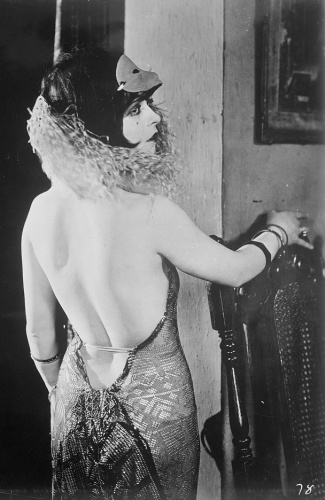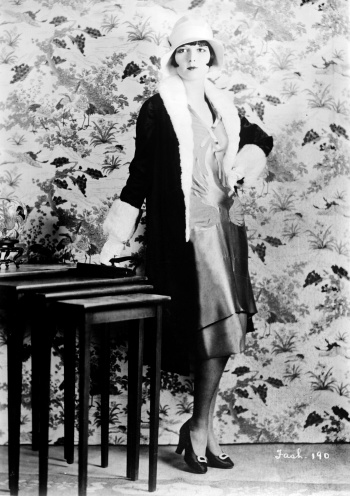The carefree and liberated attitude of the 1920s that had so affected the style and cut of womenswear began to fade out by the end of 1930, as the Great Depression began to take effect. The skinny, boyish figure was no longer seen as being desirable, and skirts were lengthened and waistlines raised in an attempt to bring back the traditional woman’s figure. However, short hair stayed fashionable until the end of the 30s and even the start of the 40s.

Throughout this decade there was one thing that had a major impact on all designers: American cinema. The broad shouldered look (a staple trend of the 30s) was entirely a result of the 1931 film Cimarron, and the way women wore hats was decided by Greta Garbo in the 1930 film Romance. Wildly popular fashion magazines such as Vogue and Harper’s Bazaar wrote articles on the costumes worn in movies. Retail clothes and accessories were very much influenced by period costume designers on film sets.
But it was Parisian fashion designer Elsa Schiaparelli who created some of the most groundbreaking pieces of fashion in that decade, many of which are still used today. Ever heard of the zip? The colour ‘shocking pink’? All introduced to society by her. She is credited with making the transition of the fashion from “vague to definite”.
In terms of accessories, gloves and hats were staple pieces of this period. We’ve all seen the images of a beautiful woman wearing elbow length gloves with an evening gown, this decade is where that image originated. Hats were worn by women from all social classes, and for a few years the ‘draped turban’ was wildly popular, representing the working class women of the world.

The purpose of much of women’s style in the 1930s was to highlight a soft and feminine figure. Skirts were knee length and flowing, and dresses became designed to show the contours of the female form, using a bias-cut design. Ensembles (matching dresses/skirts and coats) appeared as a popular trend, as did halter necked and backless evening gowns. A new era of pre-war glamour had moved in, one that was very much influenced by the allure of the cinema. Perhaps it was a precursor to the golden age of Hollywood?

